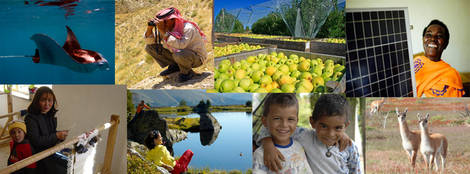Biosphere Reserves – Learning Sites for Sustainable Development
Biosphere reserves are areas comprising terrestrial, marine and coastal ecosystems. Each reserve promotes solutions reconciling the conservation of biodiversity with its sustainable use.
Biosphere reserves are ‘Science for Sustainability support sites’ – special places for testing interdisciplinary approaches to understanding and managing changes and interactions between social and ecological systems, including conflict prevention and management of biodiversity.
Biosphere reserves are nominated by national governments and remain under the sovereign jurisdiction of the states where they are located. Their status is internationally recognized.
There are 686 biosphere reserves in 122 countries, including 20 transboundary sites. They are distributed as follows:
Three zones, one biosphere reserve!
Biosphere reserves have three interrelated zones that aim to fulfil three complementary and mutually reinforcing functions:
- The core area(s) comprises a strictly protected ecosystem that contributes to the conservation of landscapes, ecosystems, species and genetic variation.
- The buffer zone surrounds or adjoins the core areas, and is used for activities compatible with sound ecological practices that can reinforce scientific research, monitoring, training and education.
- The transition area is the part of the reserve where the greatest activity is allowed, fostering economic and human development that is socio-culturally and ecologically sustainable.




